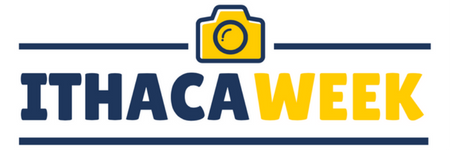Denise Agati, Interim Director of the Child Nutrition Program at ICSD, said the number of students qualified for free and reduced lunches reflect the economics of the city.
“We have a certain number every year,” Agati said. “The challenge becomes making sure the resources go as far as they can.”
The district of 13 different schools serves about 5,300 students. The district currently serves 3,500 meals every day. Thirty-five percent of students qualify for free and reduced lunch in the district, a number Agati says has stayed relatively stable during her tenure.
Christina Culver, executive director of Loaves and Fishes, a congregate meal provider, said school lunch programs and the work of soup kitchens in the Ithaca area help ensure students and their families will be fed.
“We have seen a continual and steady need for complete healthy meals,” she said. “Especially in summertime when children aren’t at school.”
Culver said in 2012, Loaves and Fishes served over 37,000 meals averaging at over 3,000 meals per month an increase from 2010 and 2011.
ICSD receives a reimbursement at a percentage of the price for each meal from federal government and state government. The National School Lunch Program supports student nutrition in more than 100,000 schools and residential facilities. According to the program, in the 2011-2012 school year, 31 million students were fed, 59 percent of which were free of charge.
The increased use of supplemental nutrition programs comes with increasing use of food pantries and congregate meal sites according to the Tompkins County United Way.
The Food Bank of the Southern Tier currently serves 11,000 meals every week, an increase from 9,000 that were served in 2010. Recent data in New York State shows an increase in every congressional district. Hunger in Tompkins County is, however, relatively low compared to the rest of the state, according to Hunger Action Network of New York State.
However, Missy Goetschius, Community and Public Relations Manager for the Food Bank of the Southern Tier, says that hunger for families is more prevalent in the area than data might suggest.
“Most people take for granted where their meals are coming from,” she said.
In 2011, the Food Bank received 1,308,651 requests for food, 562,547 of which came from people with children. A new study from Feeding America, a hunger awareness group, estimates that nearly 24,000 children, or 20% of the population less than 18 years old, are struggling with hunger across the Food Bank’s six county service area including Broome, Chemung, Schuyler, Steuben, Tioga and Tompkins.
In the past decade, usage of food pantries in Tompkins County has increased to serve 11.7 percent more individuals and 30 percent more families.
“What’s alarming is the food banks we’re working with are reporting increased usage of first-time families, families that previously hadn’t needed assistance.”
Only in the past year, the United Way has increased providing food and hunger assistance to an additional 39 families, said Meg Cole, spokesperson at Tompkins County United Way. In December, the board awarded grants to food banks whose resources had been completely exhausted. Programs such as the Food Bank’s Backpack Program also serve to provide supplemental nutrition to students while they are not in school.
“Programs like that can help bridge that gap,” she said.
In the past ten years, the number of students in Ithaca receiving free and reduced-price lunch increased by 10 percent. At the school district, Agati said she remains optimistic about the district’s ability to meet the needs of the students.
“I think right now, the government is all about the children,” she said. “They’ve been trying to do a lot for them. The people that I work with at the state and the federal government appreciate what we do.”







